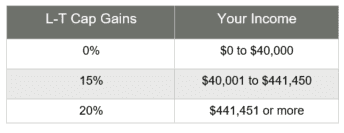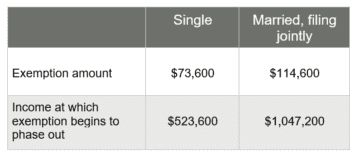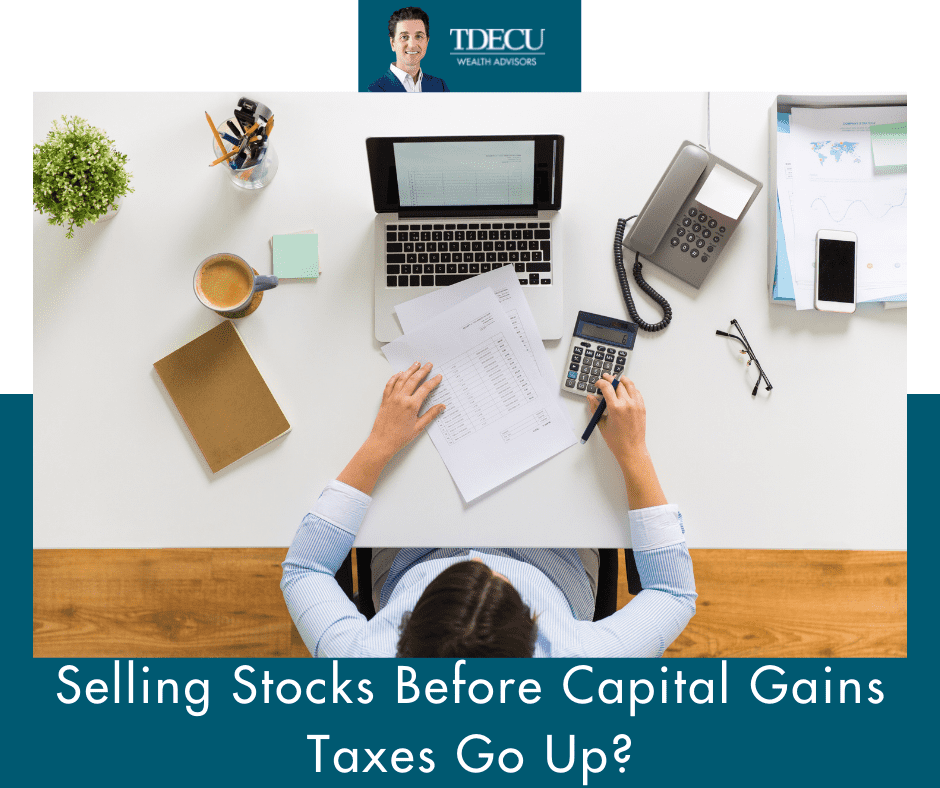Are you thinking about bailing out of stocks before year-end while the capital gains rate is low? Before you hit the sell button, think it over carefully. For now, the long-term capital gains tax rate is 0%, 15% or 20% depending on your taxable income and filing status. Next year, those rates could rise.
Current L-T Cap Gains Tax Rate

Yes, it is possible that some upper-income taxpayers will pay a higher tax rate on long-term capital gains starting next year. This will no doubt be negotiated further as our political leaders wrestle in Washington.
At this point, we also really don’t know whether taxes will rise, or by how much. There is a lot of publicity about this, but only time will tell.
As such, some investors are thinking about selling now to lock in the 15% rate and then buying back the same securities if they think they will rise further.
There might be some merit to that strategy, but don’t move too fast.
Remember the Alternative Minimum Tax
One potential drawback is the alternative minimum tax (AMT). If you are subject to AMT, the 15% capital gains rate could effectively become 26% or 28%, because of how the AMT is currently calculated.
Those who are subject to AMT typically have relatively high incomes. And essentially they calculate their income tax twice — under regular tax rules and under the stricter AMT rules — and then pay the higher amount owed.
Here is one way to look at it: the AMT runs along the same lines as our standard tax system, but it has a different tax rate structure and eliminates some common tax breaks. And while there are seven federal income tax brackets (for now) ranging from 10% to 37%, the AMT has two tax brackets: 26% and 28%.
AMT Exemption Amounts for 2021

It would be a shame to sell now to lock in a 15% tax rate when actually you’d end up paying more than if you waited. Will you be subject to the AMT next year? Tough to say, because Congress could change the rules and subject millions of more taxpayers to the AMT next year.
But with all of that being said, you should not base investment decisions solely on taxes. What matters is how much profit you get to keep after taxes and how well your portfolio is positioned and diversified. But before rushing to lock in a 15% rate, be sure to consider all of the variables.
Sit down and talk with a financial professional before making any rash decisions.
Have specific questions? Don't hesitate to reach out to me today
Wes Garner, CRPC
Principal Wealth Strategist
(281) 269-8669
wgarner@tdecu.org

Important Disclosures
Investing involves risks including possible loss of principal. No investment strategy or risk management technique can guarantee return or eliminate risk in all market environments.
This information is not intended to be a substitute for specific individualized tax advice. We suggest that you discuss your specific tax issues with a qualified tax advisor.
The opinions voiced in this material are for general information only and are not intended to provide specific advice or recommendations for any individual.
All information is believed to be from reliable sources; however LPL Financial makes no representation as to its completeness or accuracy.
This article was prepared by FMeX.
LPL Tracking #1-05208572
